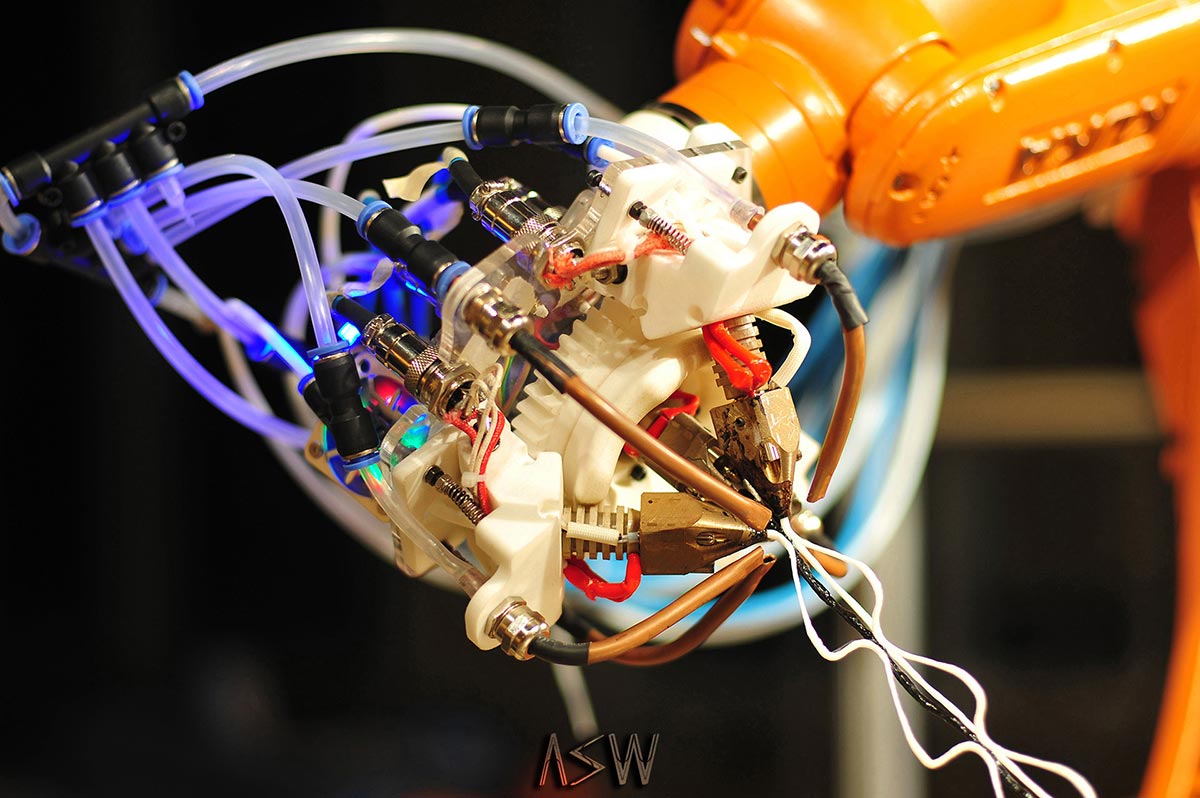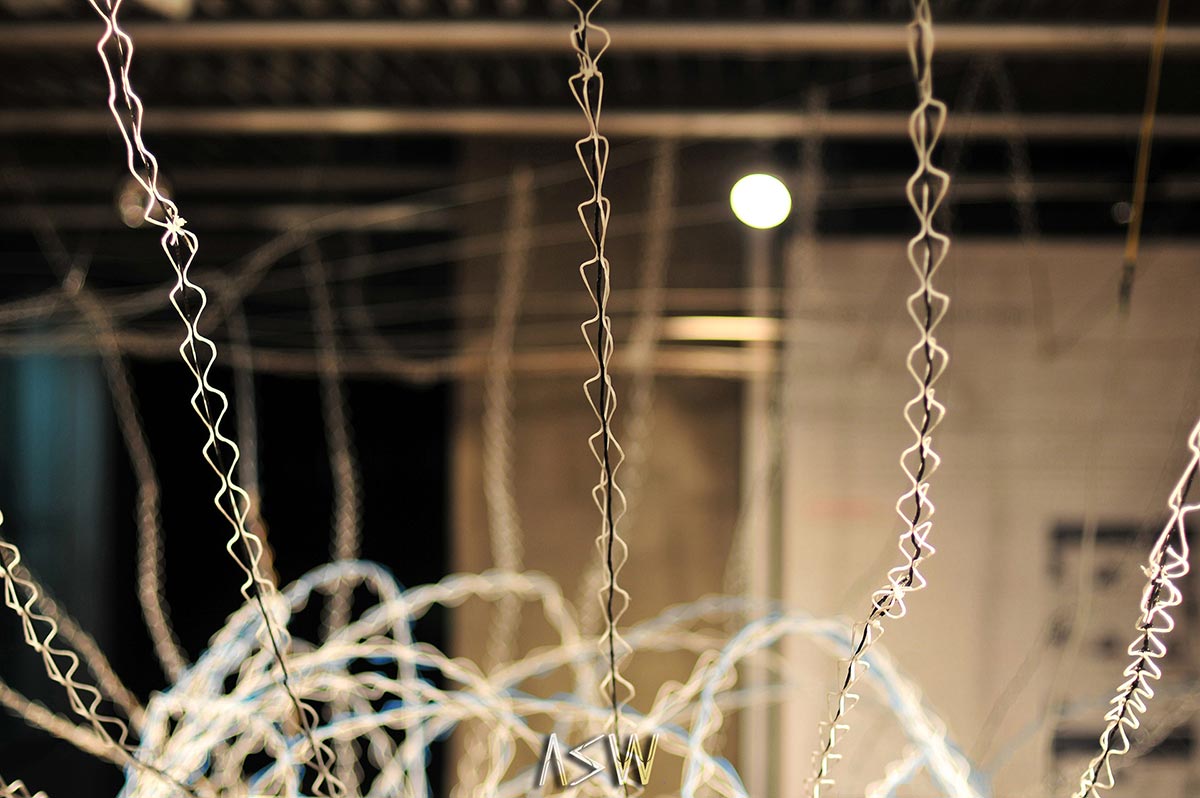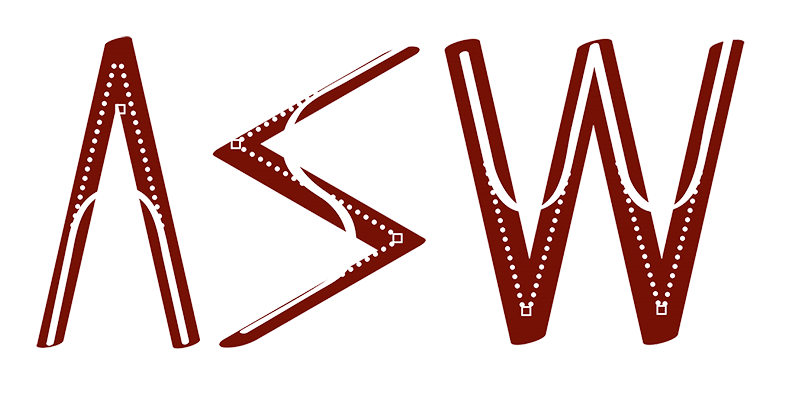
Abstract
This paper discusses a robotic multi-dimensional printing design methodology based on a material’s structural performance. Through research on the process of a spider’s behavior, e.g., spinning and weaving, the designers simulate natural construction principles and apply them to the optimization of traditional 3D printing techniques. A 6-axis robot is programmed to carry a customized printing end effector to create free-standing geometries in space. The structural behavior of the design is optimized through the consistent negotiation between material analysis and structural simulation in both virtual and physical environment, together with the implementation of sensor input and real-time feedback between construction tools and simulation interfaces. The printing tools are designed with additional extruders and nozzles of various dimensions to adapt to different materials and design requirements.....
Specs
Conference: Rob|Arch
Year: 2016
Type: Scientifice paper
Press: Springer International Publishing
Page:92-103
doi:10.1007/978-3-319-26378-6
Author: Philip F. Yuan, Hao Meng, Lei Yu, Liming Zhang

